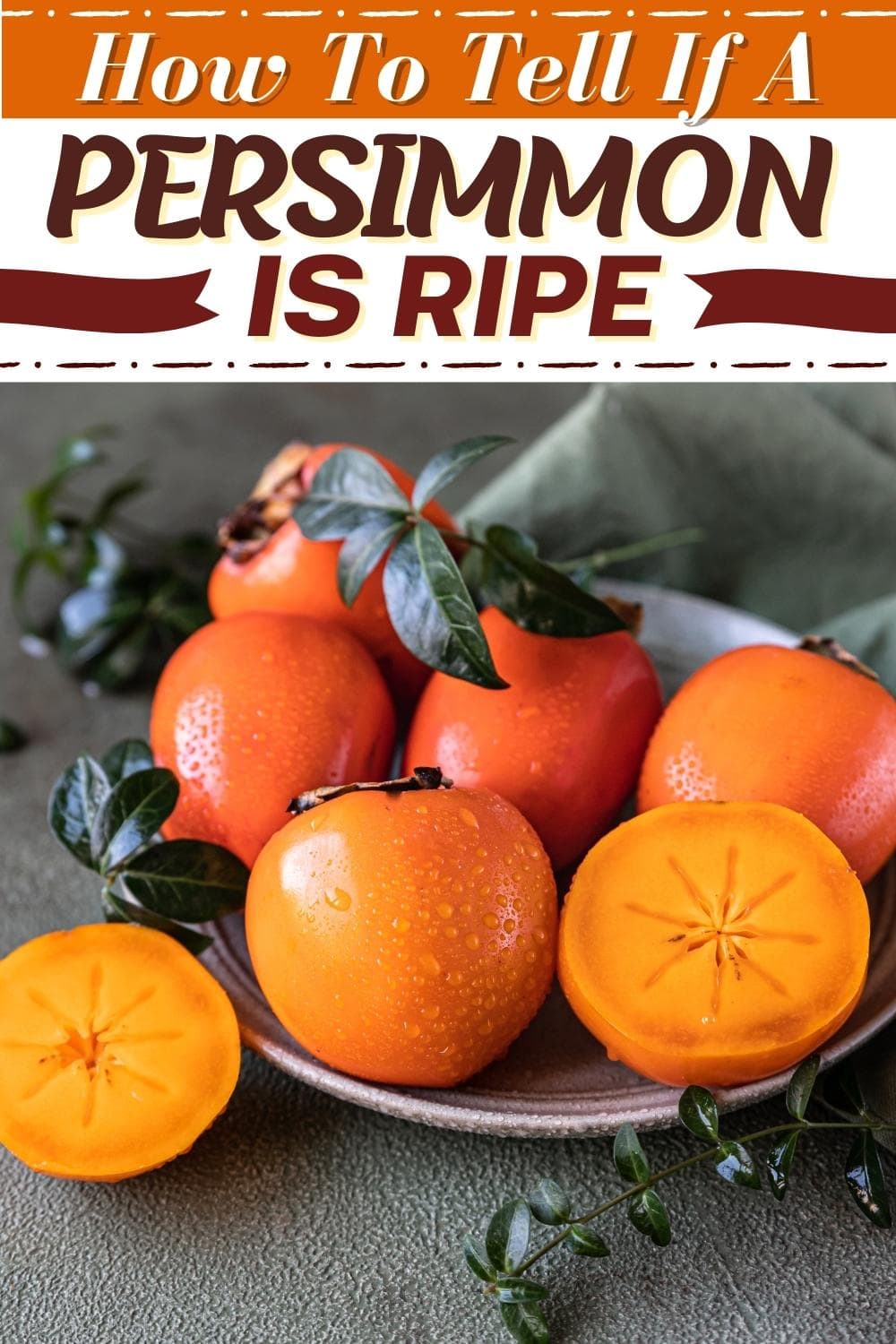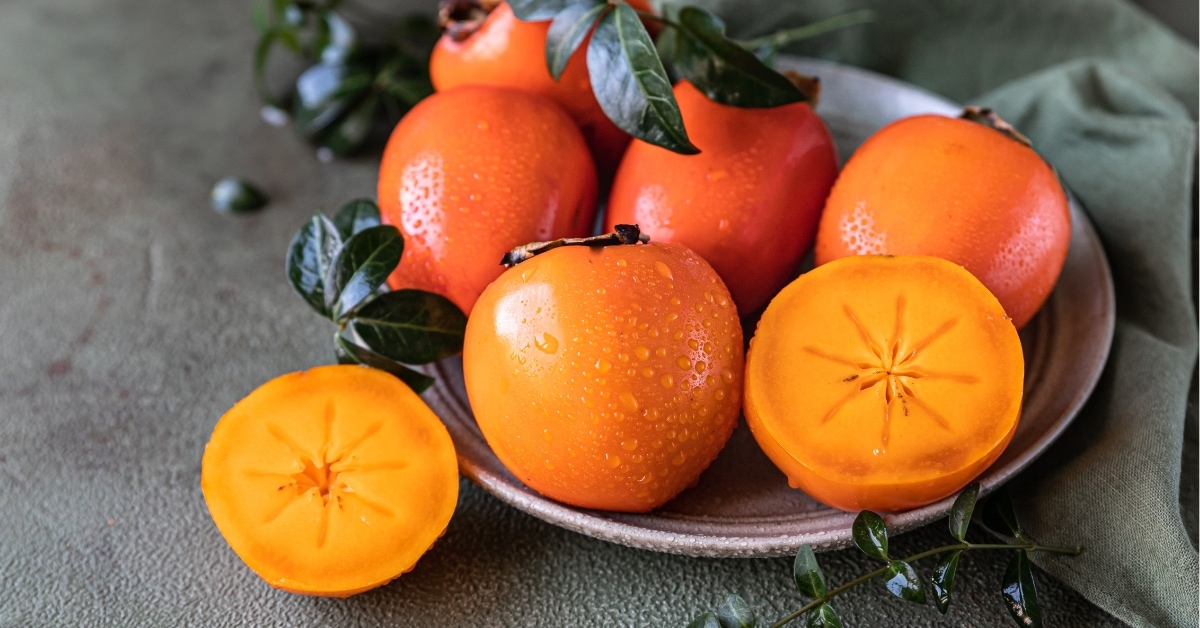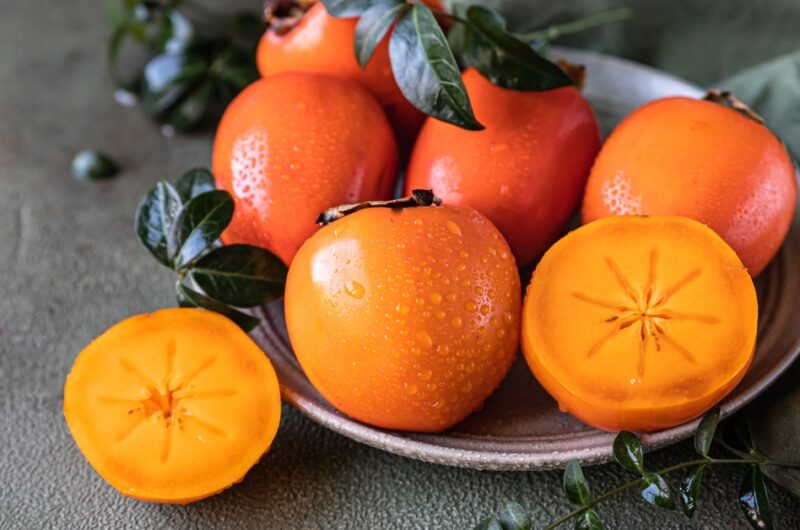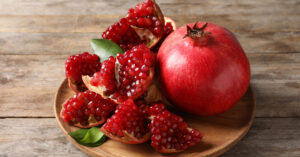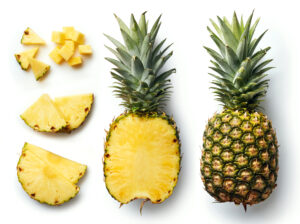Trying to figure out how to tell if a persimmon is ripe?
You’re not the only one! And from color to aroma, there are a few things to look out for.

Unlike bananas which are easy to identify as ripe, it’s not easy to look at a persimmon and know it’s ready to eat.
It’s not the most common fruit. But it has a delicate melon-like flavor and honey sweetness.
So I don’t blame you for wanting to try it!
And if you’re wondering how to tell if a persimmon is ripe, keep reading! That way, you get the best of this exotic fruit.
How to Tell If a Persimmon Is Ripe
There are four main ways to tell if a persimmon is ripe:
- Appearance – it should be bright orange
- Texture – it should be a little soft
- Aroma – ripe persimmons smell sweet
- Taste – it should be sweet and honey-like
But since there are a few different types of persimmon, let’s take a closer look at these factors.
Appearance
The first indication that a persimmon is ripe is typically the color.
However, that’s also one of the least accurate. And that’s because, as mentioned, there are a few different types of persimmon.
And unfortunately, each one is a bit different.
That said, if you live in the U.S., the most widely sold persimmons are:
- Fuyu – bright orange when ripe
- Hachiya – deeper orange, almost red when ripe
So, look for bright orange or dark orange fruits bordering on red.
(Another variety turns dark purple when it’s ripe. But it isn’t as widely available in the United States.)
Check the shininess of the skin, as well. When both types of persimmon are ripe, they should be pretty shiny.
And if they are withered or wrinkled, they’re likely overripe and not good to eat.
Texture
Like many fruits, you’ll notice unripe persimmons are hard. And they soften as they ripen.
So if your persimmon is solid and has no give (a feeling of softness when you gently press or squeeze it), it isn’t ripe.
- Hachiya persimmons are very soft when ripe, almost like a tomato.
- Fuyus don’t get that soft, but they still give when you press them.
Note: if your fuyu persimmon is tomatoey soft, it’s probably gone bad.
Aroma
Like plums, melons, and peaches, ripe persimmons smell sweet.
That goes for both varieties we’ve talked about.
And while the aroma isn’t as bold or noticeable as some other fruits, it’s still there.
Plus, unripe persimmons have little to no smell at all. On the other hand, overripe ones may have a musky, fermented odor.
Taste
Finally, there’s the taste test.
And unfortunately, this requires cutting into the persimmon. At that point, if the fruit isn’t ripe, you’ll have to trash it.
Even so, you’ll know a persimmon is ripe when you taste it, and it’s slightly sweet and honey-like.
Unripe persimmons are sour, and overripe ones taste like fermented mush.

How to Ripen a Persimmon
If you have an unripe persimmon, fear not. If you leave it sitting at room temperature for several days, it’ll ripen on its own.
Of course, sometimes you don’t want to wait that long. So if you want to speed up the process, you can do that, too.
Simply place the persimmon in a brown paper bag.
It’s the same concept as ripening avocados: it helps to retain the ethylene gas. That, in turn, will cause the fruit to ripen faster.
If you want it to ripen even faster, place a banana in the bag with the persimmon.
Either way – banana or not – be sure to close the bag tightly, so no light creeps in. The dark, closed environment is best for ripening persimmons.
How to Store a Persimmon
It always feels so unfair to me. Fruit takes so long to ripen and then goes bad seemingly overnight once it does!
Where’s the justice?!
So, if you have a ripe persimmon, my best advice is to eat it. Otherwise, you might return to a mushy mess that’s no longer edible tomorrow.
Still, if you can’t possibly eat it today, you can pop it in the fridge. It should slow the ripening process just enough to give you 1 to 3 more days.
You don’t have to cover it or place it in a bag. Just put it somewhere out of the way until you’re ready to eat it.
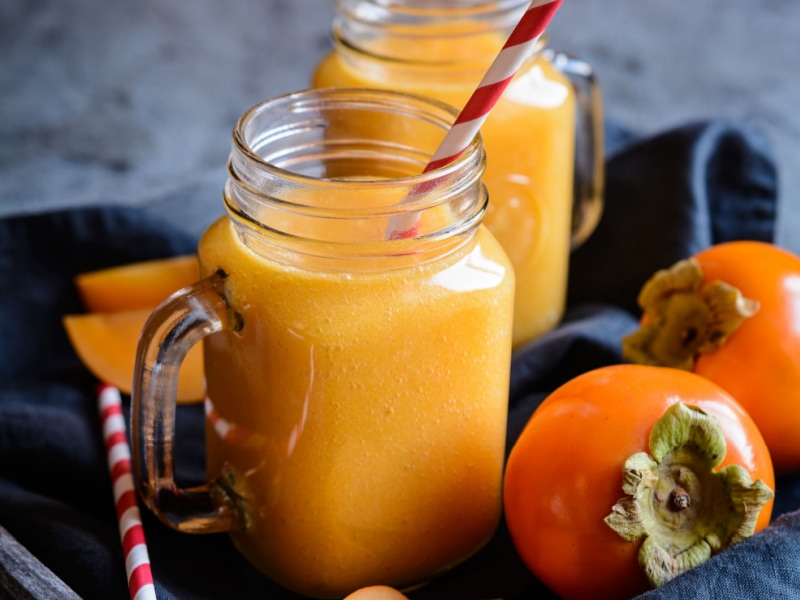
How to Use a Persimmon
Many people eat persimmons raw. However, there are other ways you can enjoy them.
You can also slice them up* and add them to yogurt or salads. Or go for one of the ideas below:
- Persimmon bread
- Smoothies
- Sorbet
- Ice cream
- Cakes
- Soups
- Persimmon pudding
- Cobblers
- Persimmon compote
There are plenty of other phenomenal persimmon recipes online. So get Googling and enjoy!
*Note: Hachiya persimmons get very soft when ripe, meaning you may not be able to cut them. So if you want to slice a persimmon, it’s better to use fuyus.
